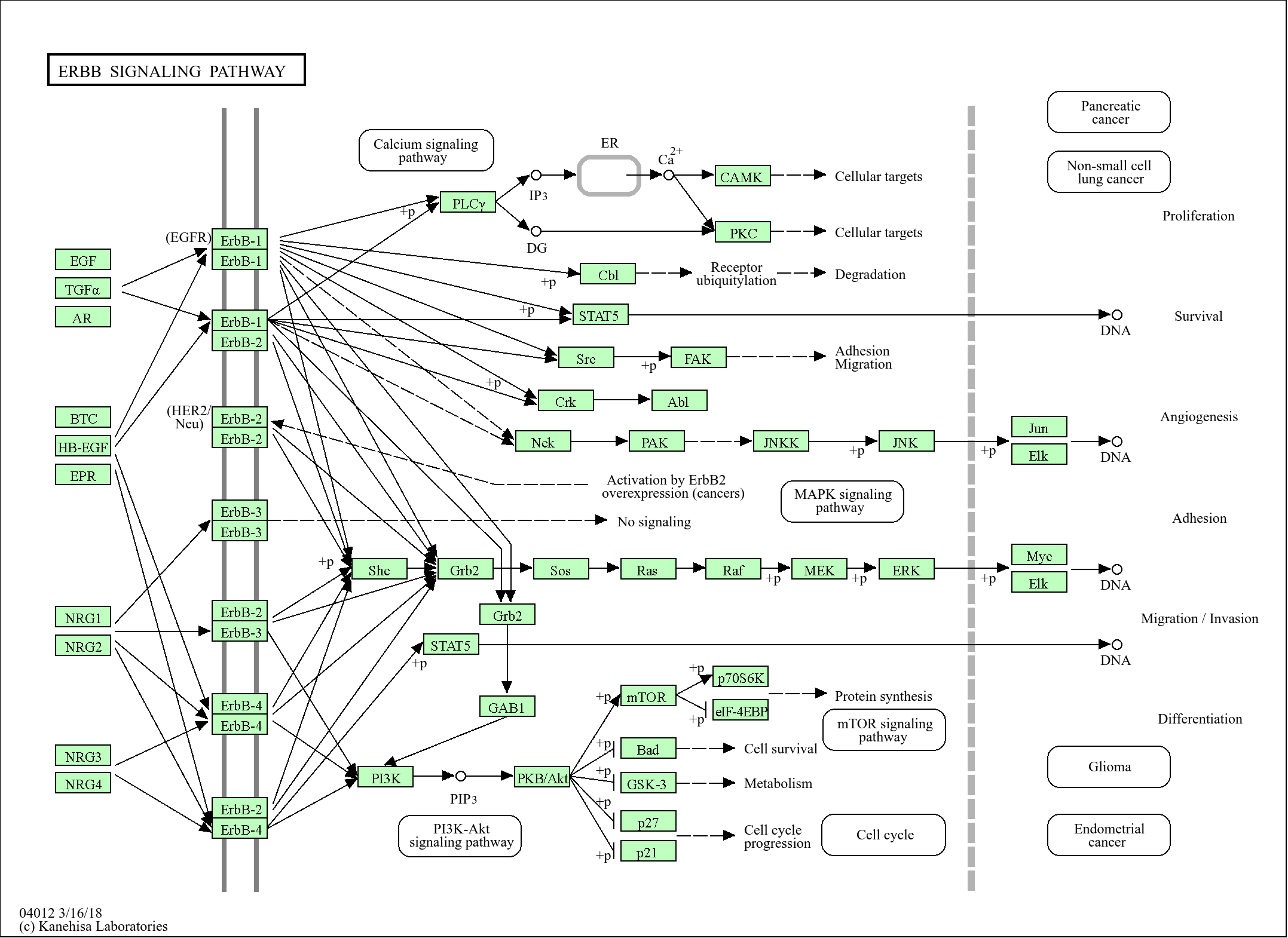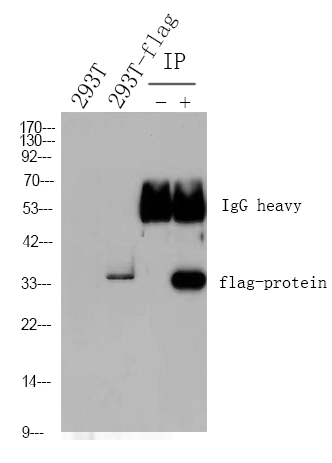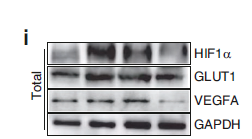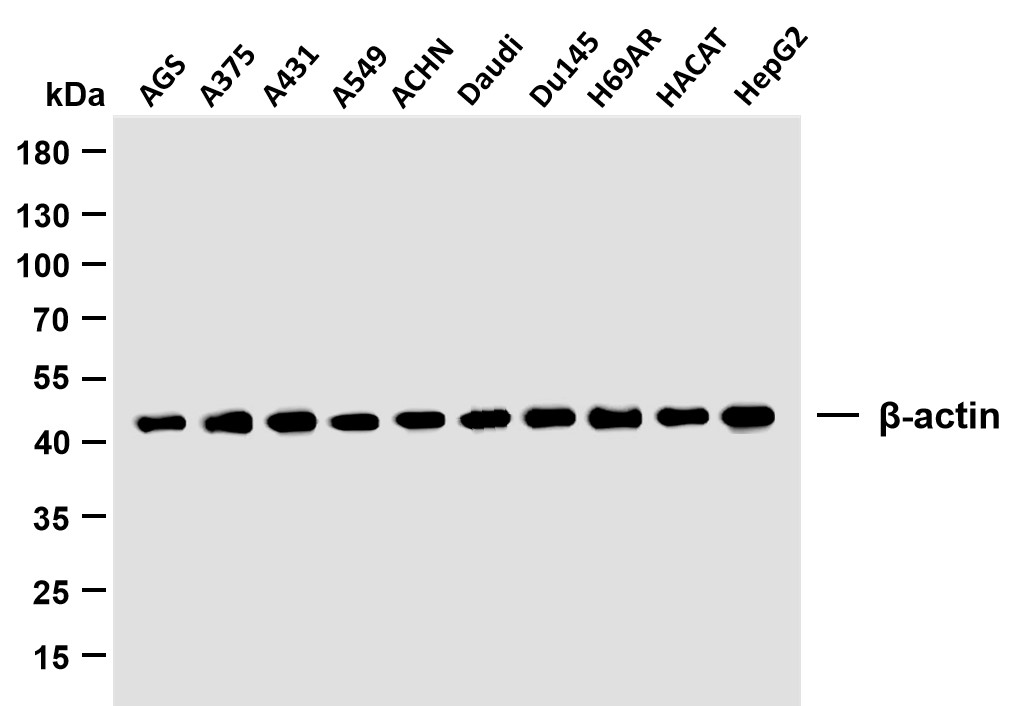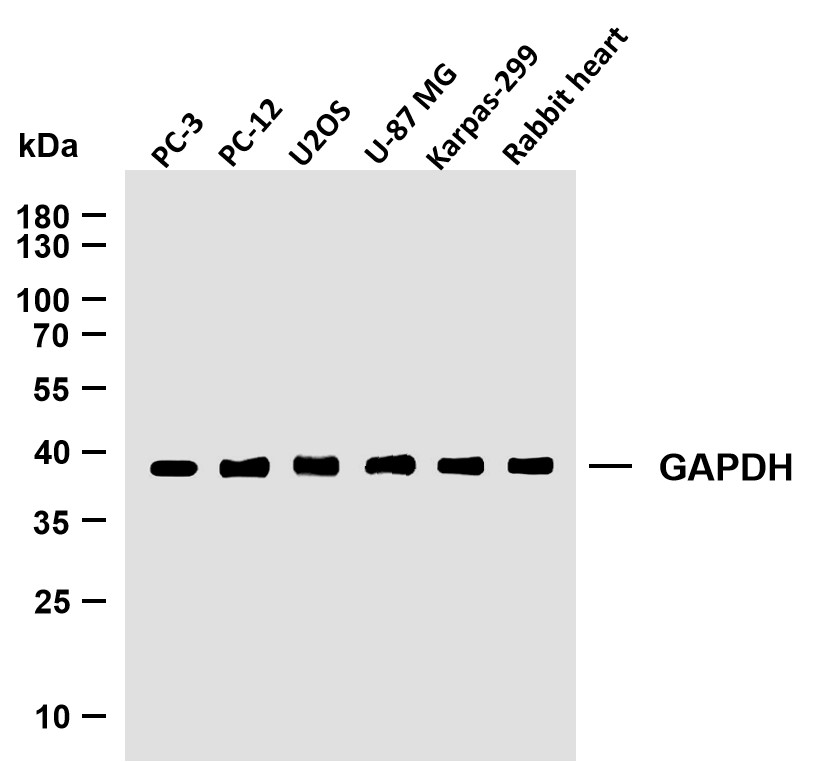
Catalog: YP0741
Size
Price
Status
Qty.
200μL
$600.00
In stock
0
100μL
$340.00
In stock
0
50μL
$190.00
In stock
0
Add to cart


Collected


Collect
Main Information
Target
GRK1
Host Species
Rabbit
Reactivity
Human, Mouse, Rat, Monkey
Applications
WB, IHC, IF, ELISA
MW
63kD (Observed)
Conjugate/Modification
Phospho
Detailed Information
Recommended Dilution Ratio
WB 1:500-1:2000; IHC 1:100-1:300; ELISA 1:5000; IF 1:50-200
Formulation
Liquid in PBS containing 50% glycerol, 0.5% BSA and 0.02% sodium azide.
Specificity
Phospho-GRK 1 (S21) Polyclonal Antibody detects endogenous levels of GRK 1 protein only when phosphorylated at S21.The name of modified sites may be influenced by many factors, such as species (the modified site was not originally found in human samples) and the change of protein sequence (the previous protein sequence is incomplete, and the protein sequence may be prolonged with the development of protein sequencing technology). When naming, we will use the "numbers" in historical reference to keep the sites consistent with the reports. The antibody binds to the following modification sequence (lowercase letters are modification sites):RGsFD
Purification
The antibody was affinity-purified from rabbit antiserum by affinity-chromatography using epitope-specific immunogen.
Storage
-15°C to -25°C/1 year(Do not lower than -25°C)
Concentration
1 mg/ml
MW(Observed)
63kD
Modification
Phospho
Clonality
Polyclonal
Isotype
IgG
Related Products
Antigen&Target Information
Immunogen:
The antiserum was produced against synthesized peptide derived from human GRK1 around the phosphorylation site of Ser21. AA range:6-55
show all
Specificity:
Phospho-GRK 1 (S21) Polyclonal Antibody detects endogenous levels of GRK 1 protein only when phosphorylated at S21.The name of modified sites may be influenced by many factors, such as species (the modified site was not originally found in human samples) and the change of protein sequence (the previous protein sequence is incomplete, and the protein sequence may be prolonged with the development of protein sequencing technology). When naming, we will use the "numbers" in historical reference to keep the sites consistent with the reports. The antibody binds to the following modification sequence (lowercase letters are modification sites):RGsFD
show all
Gene Name:
GRK1
show all
Protein Name:
Rhodopsin kinase
show all
Other Name:
GRK1 ;
RHOK ;
Rhodopsin kinase ;
RK ;
G protein-coupled receptor kinase 1
RHOK ;
Rhodopsin kinase ;
RK ;
G protein-coupled receptor kinase 1
show all
Background:
This gene encodes a member of the guanine nucleotide-binding protein (G protein)-coupled receptor kinase subfamily of the Ser/Thr protein kinase family. The protein phosphorylates rhodopsin and initiates its deactivation. Defects in GRK1 are known to cause Oguchi disease 2 (also known as stationary night blindness Oguchi type-2). [provided by RefSeq, Jul 2008],
show all
Function:
Catalytic activity:ATP + [rhodopsin] = ADP + [rhodopsin] phosphate.,Disease:Defects in GRK1 are a cause of congenital stationary night blindness Oguchi type (CSNBO) [MIM:258100]; also known as Oguchi disease. Congenital stationary night blindness is a non-progressive retinal disorder characterized by impaired night vision. CSNBO is an autosomal recessive form associated with fundus discoloration and abnormally slow dark adaptation.,Function:Phosphorylates rhodopsin thereby initiating its deactivation.,online information:Retina International's Scientific Newsletter,PTM:Autophosphorylated.,PTM:Farnesylation is required for full activity.,similarity:Belongs to the protein kinase superfamily. AGC Ser/Thr protein kinase family. GPRK subfamily.,similarity:Contains 1 AGC-kinase C-terminal domain.,similarity:Contains 1 protein kinase domain.,similarity:Contains 1 RGS domain.,tissue specificity:Retina and pineal gland.,
show all
Cellular Localization:
Membrane ; Lipid-anchor . Cell projection, cilium, photoreceptor outer segment . Subcellular location is not affected by light or dark conditions. .
show all
Tissue Expression:
Research Areas:
>>Chemokine signaling pathway ;
>>Endocytosis ;
>>Phototransduction
>>Endocytosis ;
>>Phototransduction
show all
Signaling Pathway
Reference Citation({{totalcount}})
Catalog: YP0741
Size
Price
Status
Qty.
200μL
$600.00
In stock
0
100μL
$340.00
In stock
0
50μL
$190.00
In stock
0
Add to cart


Collected


Collect
Recently Viewed Products
Clear allPRODUCTS
CUSTOMIZED
ABOUT US
Toggle night Mode
{{pinfoXq.title || ''}}
Catalog: {{pinfoXq.catalog || ''}}
Filter:
All
{{item.name}}
{{pinfo.title}}
-{{pinfo.catalog}}
Main Information
Target
{{pinfo.target}}
Reactivity
{{pinfo.react}}
Applications
{{pinfo.applicat}}
Conjugate/Modification
{{pinfo.coupling}}/{{pinfo.modific}}
MW (kDa)
{{pinfo.mwcalc}}
Host Species
{{pinfo.hostspec}}
Isotype
{{pinfo.isotype}}
Product {{index}}/{{pcount}}
Prev
Next
{{pvTitle}}
Scroll wheel zooms the picture
{{pvDescr}}

